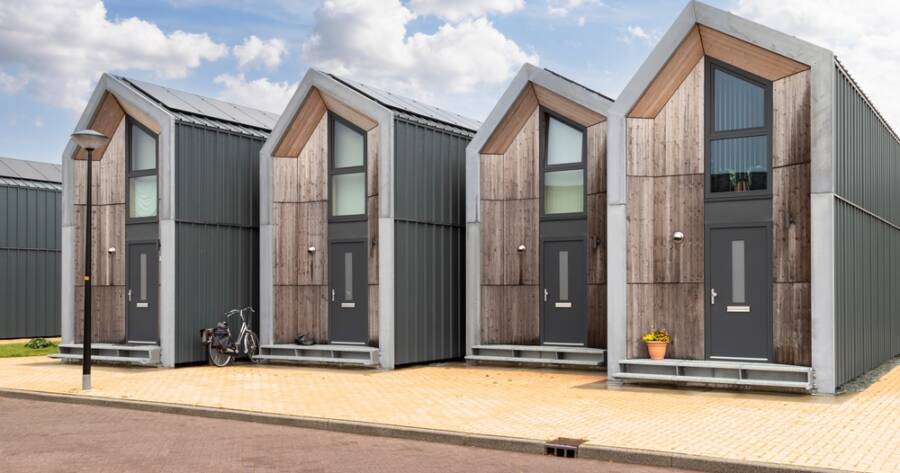Across the United States, a quiet but powerful shift is changing the way people think about home. The micro-home movement — focused on smaller, smarter living — has gained momentum as more Americans seek simplicity, sustainability, and financial freedom. Compact dwellings, often ranging from tiny houses to studio-style apartments, are proving that comfort and creativity don’t require excess square footage. For many, living small isn’t about sacrifice; it’s about redefining what “enough” truly means.
Rethinking the Meaning of Space
For generations, the American dream was tied to size — larger homes, sprawling lawns, and extra rooms that symbolized success. But rising housing costs, environmental awareness, and changing lifestyles have led many to question that ideal. The micro-home movement challenges the idea that more space equals more happiness.
Living small encourages people to use every inch of their home intentionally. In these compact spaces, design replaces volume, and organization replaces excess. A single multipurpose room might serve as a living area by day and a bedroom by night. Furniture often doubles in function — tables that fold into walls, couches that hide storage, or loft beds that free up floor space.
This approach invites creativity. By stripping away what’s unnecessary, residents find more clarity and focus in their surroundings. A smaller home doesn’t just change how people live — it changes how they think about living.
Design That Works Harder, Not Bigger
Design innovation lies at the heart of the micro-home movement. Architects and builders are finding clever ways to make small spaces feel open and functional. The key isn’t adding more, but making every element count.
Natural light plays a major role in creating a sense of spaciousness. Large windows, glass doors, and skylights make small interiors feel airy and connected to the outdoors. High ceilings and open layouts help avoid the feeling of confinement, while built-in shelving and hidden storage keep clutter out of sight.
Materials and finishes also influence how a space feels. Lighter colors expand a room visually, while wood and natural textures add warmth and depth. Compact appliances — smaller fridges, two-burner stoves, combination washer-dryers — allow for full functionality without consuming space.
The movement has also encouraged manufacturers to rethink scale. Companies now design furniture specifically for smaller homes, prioritizing adaptability and efficiency. The result is a blend of modern aesthetics and mindful practicality that makes small spaces not just livable, but genuinely beautiful.
Sustainability in Small Living
Micro-homes naturally support more sustainable lifestyles. Smaller footprints mean less energy consumption, lower heating and cooling costs, and fewer materials used in construction. Many micro-home owners also incorporate eco-friendly features such as solar panels, rainwater collection systems, and energy-efficient insulation.
Living small often leads to consuming less overall. With limited space for belongings, residents become more deliberate about what they own. This mindset extends beyond the home, influencing how people travel, eat, and spend. For many, downsizing becomes part of a larger shift toward minimalism and environmental responsibility.
In cities where housing density is growing, micro-apartments also present a sustainable alternative to urban sprawl. They allow more people to live closer to work, culture, and community resources without expanding outward. This reduces reliance on long commutes and supports more walkable, efficient neighborhoods.
Sustainability, then, isn’t just a feature of micro-homes — it’s built into their very philosophy: live well, but live lightly.
The Emotional Freedom of Less
Beyond design and sustainability, the micro-home movement touches something deeply emotional. Many people drawn to small living describe a sense of relief that comes from shedding excess — not just possessions, but also maintenance, debt, and stress.
A smaller home often means lower expenses, giving residents more financial flexibility and time for what matters most. Without the pressure of large mortgages or endless upkeep, people invest more in experiences — travel, relationships, hobbies, and personal growth.
Psychologically, simplicity offers clarity. When your surroundings are uncluttered, your mind often follows. This connection between physical space and emotional well-being is one reason the movement resonates across different generations — from young professionals seeking independence to retirees embracing downsized lifestyles.
Ultimately, small living invites a redefinition of abundance. It’s not about owning more, but about feeling more connected — to your home, your community, and your values.
The Challenges of Going Small
Of course, living in a micro-home isn’t without its challenges. Downsizing requires careful planning and adaptability. Privacy can be limited, and entertaining guests might take creativity. Storage solutions must be thoughtful, and organization becomes a daily habit rather than an occasional task.
Zoning laws and financing can also be hurdles, particularly for those interested in mobile or tiny homes. Some municipalities have begun updating regulations to accommodate smaller dwellings, but progress varies by region.
Still, for those willing to embrace the trade-offs, the benefits often outweigh the inconveniences. The movement’s growing popularity suggests that many Americans are ready to rethink what makes a home fulfilling — and what makes life satisfying.
Small Homes, Big Possibilities
The micro-home movement is about far more than downsizing — it’s about liberation. By choosing to live smaller, people are reclaiming control over their time, money, and mental space.
These homes prove that comfort, style, and meaning don’t depend on square footage. They invite a life built around experiences, not possessions — a life where design serves purpose and simplicity fuels creativity.
In an age where bigger often seems better, micro-homes remind us that happiness can thrive in small spaces — as long as they’re filled with intention, warmth, and room to dream.

